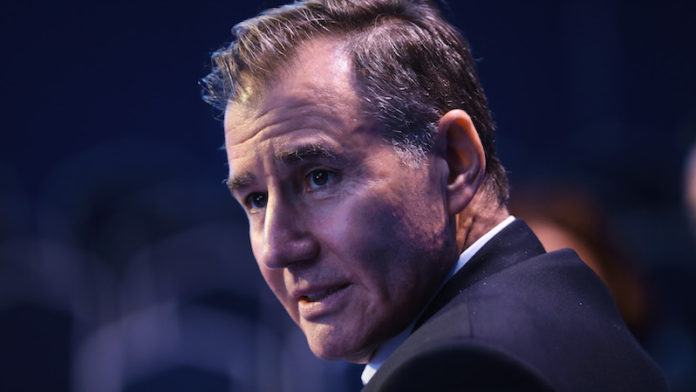
GLENCORE kept the dividend steady at 20 US cents/share for its 2020 financial year – equal to a $2.6bn payout – despite reporting lower earnings for 2019 which it said was a function of impairments and trade tensions that muted pricing for its metals.
Adjusted EBITDA was 26% lower year-on-year at $11.6bn and net income, before significant items, declined 58% to $2.4bn. Including significant items, such as $2.8bn in impairments of which about $1bn related to the firm’s Colombian assets – Glencore reported a net loss attributable to equity holders of $400m. Impairments were also recorded for Chad oil and the African copper assets.
Glencore’s key metals all suffered in 2019. The average copper price was 8% lower whilst cobalt was hit particularly hard, losing 57% in price on average, although the market had started to rebalance in the second half of the year.
However, Glencore said the metals market was in relatively good shape despite the impact of the coronavirus (COVID-19) outbreak, the consequence of which was still hard to judge. “China is just back from the New Year so it’s too early to say,” said Ivan Glasenberg, CEO of Glencore during the firm’s full-year presentation. “There have been no cancellations of shipments so there’s nothing to give a clear answer as yet,” he said.
Glencore also turned attention on net debt which worried shareholders in 2015 when it topped $30bn. The number as of December 31 was ‘only’ $17.6bn, but on a net debt to adjusted EBITDA basis there was a 62% year-on-year increase to a 1.51x ratio (2018: 0.93x). Glencore has targeted a reduction in net debt to 1x its adjusted EBITDA this year.
Once net debt was at the $15bn to $14bn, the company would consider more capital management with a possible buy-back or special dividend, market depending. Glencore acknowledged – not for the first time – the continued presence of a “dislocation” between its share price and its prospects and optionality.
This dislocation is thought to partly rest on exogenous factors such as US Department of Justice and UK Serious Fraud investigations into the group’s trading activities. But there’s also been negative press related to Glencore’s African Copper division as well as its large exposure to coal production, both of which it addressed today.
Glencore CFO, Steve Kalmin said African Copper’s Katanga operations in the Democratic Republic of Congo (DRC) had stemmed $300m of losses which occurred in the first half of the year and expected to increase production this year to 275,000 tons of copper (2019: 230,000 tons). “It looks like we are back on line,” he said of Katanga.
The Mutanda operations, also in the DRC, were mothballed last year with no immediate prospect of reopening. Ask about the possibility of recommissioning, Ivan Glasenberg, CEO of Glencore, said such a decision would take at least 18 to 24 months to decide. The market would be the ultimate arbiter as well as the prevailing mining code.
Discussions on enforcing stabilisation agreements contained in the former mining code, which the DRC government superseded with a new version containing higher levies and taxes, were ongoing, said Glasenberg. “We haven’t moved to acceptance yet,” he said.
As widely expected, Glencore also set out its targets for Scope 3 to 2035 of some 30% – largely in line with its peer group. This would be partly achieved through a decision to allow coal reserves to deplete naturally. In 2019, Glencore vowed to cap coal production at 150 million tons annually under pressure from investors.
There were no plans to spin out a separate coal company in order to minimise the firm’s carbon footprint as had been speculated.
However, Glasenberg also made a spirited defence of his firm’s position in thermal coal production even as peer group companies such as Rio Tinto, BHP and Anglo American have either divested from the mineral or are considering doing so. The fuel was crucial to world economic growth, he said. “We also believe that high quality coal will continue to be a part of the overall energy mix well into the future.”
Whilst coal’s share of primary energy demand was expected to fall by 2030 to 24% of world total from 27% in 2018, it was critical to for “… affordable and stable base-load power generation”, and would underpin coal demand growth, he said.
Last year, Glasenberg said a strategy to refresh the group’s management structure had been accelerated which would ultimately affect his own position. A fourth generation transition was underway whereafter he would look at a direct successor. The successful candidate was likely to be sourced internally:
“We have such a strong bench of people who can run this company. They know the culture of the company and doubt there’s an external candidate who could do as well,” he said.











